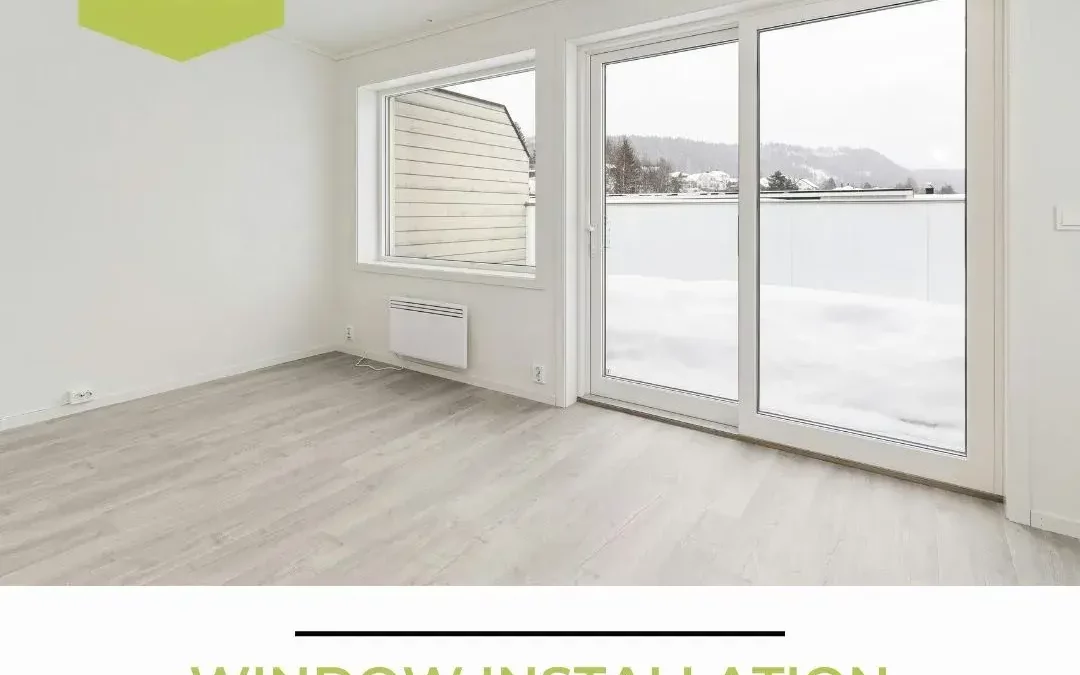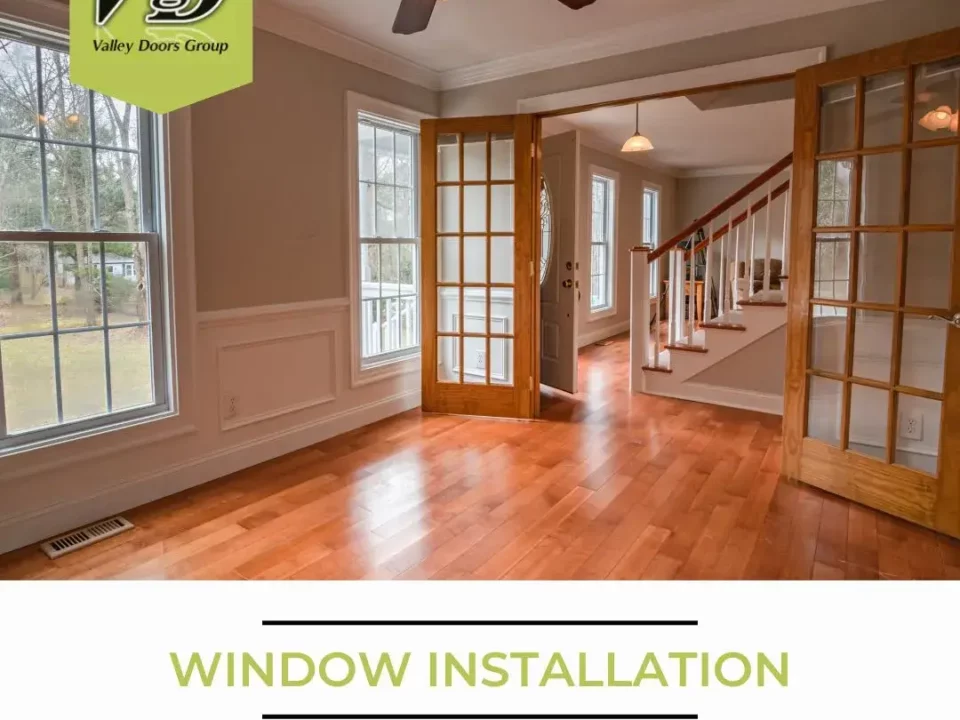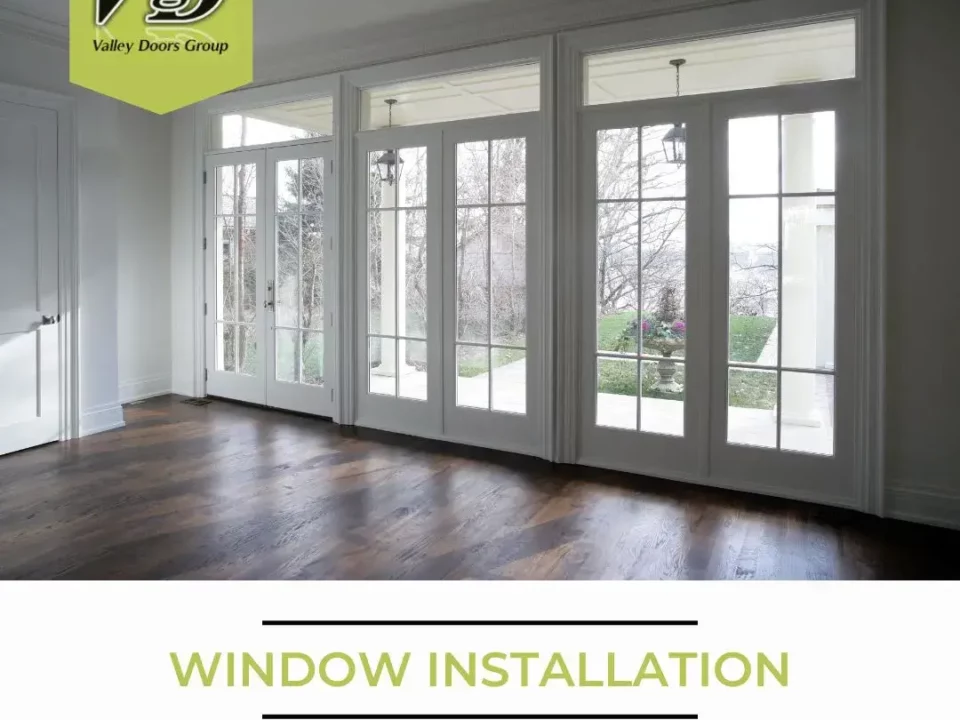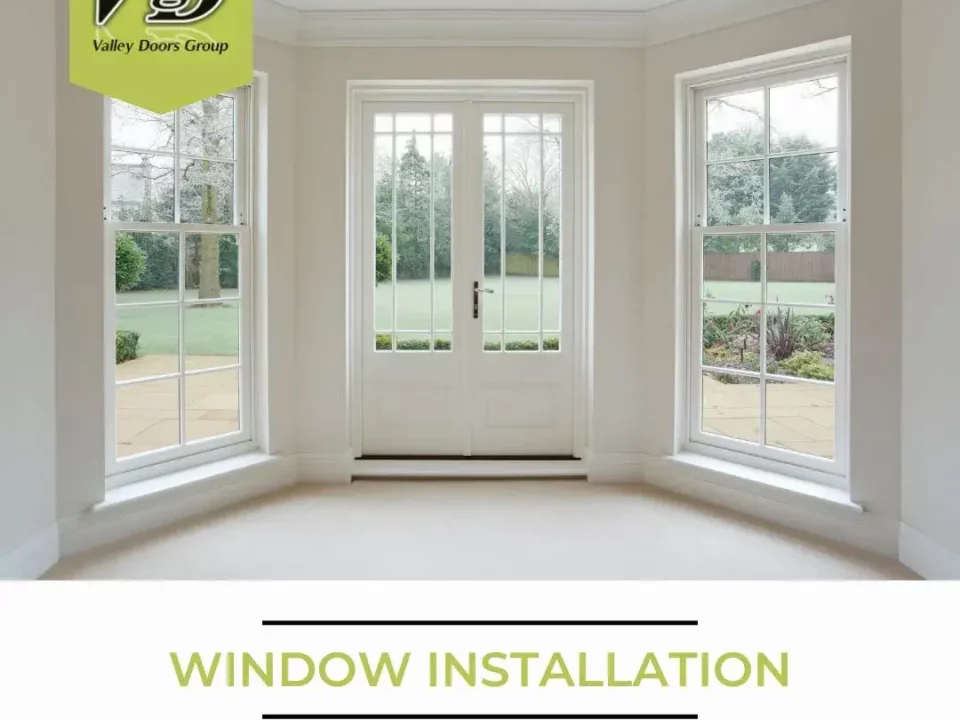Energy Benefits of Window Installation in Woodland Hills, California

Types of Windows That Enhance Home Value – Insights from a Window Supplier
October 16, 2025
Why Quality Window Installation Matters in Woodland Hills, California
October 21, 2025Living in Woodland Hills means basking in bright, sun-washed days, warm summers, and those occasional Santa Ana winds that make the air feel crisp and dry. In a climate this dynamic, you quickly learn how much your home’s windows influence comfort, utility usage, and overall peace of mind. That’s why homeowners here are taking a closer look at modern window installation as a strategic upgrade, not just a cosmetic refresh. Beyond a polished look and improved curb appeal, today’s high-performance glass and professional installation practices deliver measurable energy benefits that you can feel in every room, every day.
Whether you live near Ventura Boulevard’s bustle or in the quieter hills above the Valley, you may have noticed how rooms can overheat on summer afternoons or lose conditioned air through tiny, unnoticed gaps. The right windows turn that tug-of-war between heat and air conditioning into a balanced, efficient system. With better insulation, tuned solar heat control, and airtight sealing, your home becomes easier to cool in July and easier to keep cozy on those rare chilly mornings in January. And the payoff isn’t only about comfort—it’s about long-term performance that supports a healthier, more efficient household.
Why Woodland Hills Homes Benefit So Much from Better Windows
Our corner of the San Fernando Valley is known for microclimates: one side of a street can feel dramatically warmer than the other, and hillside properties often experience stronger winds and wider temperature swings than low-lying neighborhoods. In this environment, windows do a lot of heavy lifting. They are your home’s gateway to light and views, but also its most significant opportunity for heat gain or loss. Older single-pane windows or aging double-pane units with failing seals invite heat into the house during the day and allow conditioned air to leak out at night, forcing your HVAC system to work harder.
Modern energy-efficient windows take a holistic approach to this challenge. Glass coatings are engineered to reflect a portion of the sun’s infrared energy while letting in ample visible light, so your rooms stay bright without baking. Multi-pane assemblies filled with inert gases slow heat transfer, and warm-edge spacers reduce conductive loss around the perimeter of the glass. When paired with professional installation that addresses flashing, sealing, and alignment, your home becomes a tighter, more resilient envelope against the Valley’s temperature swings.
How Today’s Energy-Efficient Windows Work
Energy performance is more than a buzzword; it’s a set of technologies working in concert. Low-emissivity (low-E) coatings are microscopically thin metallic layers that manage heat flow without dulling daylight. In Woodland Hills, this is invaluable because the sun is both a welcome source of brightness and a major driver of heat gain. Properly selected low-E glass can reflect infrared radiation, keeping interiors cooler, while still transporting the natural light that makes rooms feel expansive.
Double- and triple-pane configurations go a step further by creating insulating barriers. The spaces between panes are often filled with argon or krypton gas, which are denser than air and slow down heat transfer. Add in warm-edge spacers that separate the panes with materials less conductive than metal, and you reduce the path for heat to travel from the blistering outdoors into your living room. Together, these features help stabilize indoor temperatures, meaning your cooling system cycles less frequently and less intensely, especially during late afternoon peaks.
Frames Matter: Vinyl, Fiberglass, and Clad Options
It’s easy to focus solely on glass, but frames influence energy performance as much as glazing. Vinyl frames are well-known for their insulating properties and low maintenance. Fiberglass frames resist expansion and contraction, which is important in our climate where daytime heat can yield to cooler evenings; stable frames help maintain a consistent seal. Wood-clad frames provide a warm interior appearance with a durable exterior, protecting against sunlight and weathering. Choosing the right frame is partly about aesthetics, but also about how the material manages heat, resists flexing, and keeps a tight grip on the glass assembly over time.
In Woodland Hills, where stucco exteriors are common, the interface between frame and wall is another critical detail. Proper flashing and sealants create a durable bridge that prevents moisture intrusion and air leakage. Even the best frame material can’t compensate for a poorly executed connection, which is why professional installation is as important as the window itself. Over years of hot summers and the occasional heavy winter rain, well-sealed frames keep drafts out, insulation intact, and your investment performing as intended.
U-Factor and SHGC: Tuning Performance to Our Sun
When we talk energy metrics, two numbers matter most: U-factor and Solar Heat Gain Coefficient (SHGC). U-factor measures overall heat transfer—lower is better for insulation. SHGC measures how much solar heat passes through the glass—lower values reduce heat gain. In Woodland Hills, most homes benefit from a low U-factor for year-round insulation plus an SHGC tuned to limit summer heat. The ideal SHGC depends on orientation and shading; windows facing west and south may call for a lower SHGC to block the harshest afternoon rays, while north-facing windows can often allow more solar gain without overheating.
A thoughtful selection feels subtle day-to-day but adds up season after season. Rooms that once felt like greenhouses in August become livable without drawing blinds all day. Spaces that were drafty at night feel consistent and calm. Over time, this steady-state comfort reduces stress on HVAC equipment, potentially extending its lifespan and supporting balanced, predictable energy usage for your household.
Comfort You Can Feel: Light, Quiet, and Stable Temperatures
Energy efficiency isn’t only a line on a label; it translates into tangible comfort. Low-E glass reduces the radiant heat you feel when standing near a window at midday. Multi-pane assemblies dampen exterior noise, which is a boon if you live near a busy thoroughfare or participate in early morning school traffic. Stable indoor temperatures keep you from constantly adjusting the thermostat or crowding into whichever room happens to be comfortable. Even your furnishings benefit; by filtering the most damaging parts of the UV spectrum, modern coatings help protect hardwood floors, artwork, and fabrics from fading.
Condensation control is another underappreciated benefit. Efficient windows reduce the cold interior glass surfaces that can attract moisture on cool nights. While Woodland Hills isn’t known for frigid winters, temperature differentials in the shoulder seasons can still draw condensation on older windows. A cleaner, drier interior environment is easier on finishes and contributes to a healthier home overall.
Installation Quality: The Hidden Driver of Energy Gains
All of these features reach their potential only when installed with care. A precise fit, continuous air barrier, and correct flashing are nonnegotiable. In stucco homes, installers must integrate new windows with the weather-resistive barrier behind the plaster and—if doing full-frame replacements—reset head flashings and pan flashings to shed water outward. Foam or backer rod and high-quality sealants create a robust perimeter joint, while shims ensure square, plumb alignment so sashes operate smoothly and lock tightly.
The difference between a decent installation and a great one may be invisible on day one, but you’ll feel it months later. A great install eliminates micro-gaps that leak conditioned air, reduces rattling during windy nights, and ensures drains and weep systems function correctly during heavy rain. Over time, that tight building envelope protects the energy-saving qualities of the glass and frame, delivering the long-term performance you paid for.
Real Homes, Real Results: Woodland Hills Scenarios
Consider a mid-century ranch on a wide lot near the foothills. Afternoon sun pours into its west-facing living room, creating hotspots that the HVAC system struggles to tame. Replacing aging single-pane windows with double-pane low-E units featuring a low SHGC transforms the space. Light remains generous, but radiant heat drops noticeably. The room feels balanced in the late afternoon, and the system cycles less aggressively, bringing a quieter, more relaxed ambiance.
Now think of a two-story home perched on a hillside, where winds can whip across the slope. Old frames have loosened over time, and sashes no longer seal cleanly. With modern frames and airtight installation, the upstairs bedrooms stop feeling drafty. Noise from the canyon softens, and sleep comes easier. These are the kinds of quiet, daily improvements that add up to a more pleasant life without complicated routines or gadgets.
Orientation, Shade, and Local Microclimates
Because our neighborhoods vary, your window strategy should be tuned to your property. South and west elevations typically warrant lower SHGC glass to block stronger sun angles, especially if shade from trees or overhangs is limited. East-facing windows catch the morning sun, which is less intense but can still produce glare in kitchens and breakfast nooks. North-facing windows see minimal direct sun and can often favor higher visible light transmission. These fine-grained choices help capture Woodland Hills’ best natural light while minimizing heat intrusion where it matters most.
Exterior shading and landscaping complement the window package. Strategic planting, awnings, or well-designed overhangs can reduce solar load on hot sides of the house, allowing you to fine-tune comfort without sacrificing views. But even with these measures, the window unit itself remains the star player; its coatings, gas fills, and seals form the most consistent, controllable layer of defense.
Selecting the Right Partner
The benefits outlined here hinge on experienced guidance. A seasoned local installer understands stucco transitions, the rhythm of our weather, and the materials that hold up best in sun-drenched conditions. They’ll help select glass packages tailored to your home’s orientation and advise on frame materials that fit your maintenance style and design goals. Mid-project surprises are less likely when a crew knows how to marry new windows to existing walls without compromising weather barriers or creating stress points.
When you consult about window installation, ask how the team approaches air sealing, flashing, and the integration with stucco or siding. Clarify whether replacements will be retrofit (insert) or full-frame, and why. The right approach balances efficiency gains with respect for your home’s architecture, and it ensures that every ounce of performance built into the window makes it into your daily life.
Maintenance that Protects Energy Performance
Energy efficiency isn’t a set-and-forget proposition. Fortunately, maintenance is straightforward. Keep tracks and weep holes clean so water drains properly, especially after windy days that carry fine dust. Inspect perimeter caulk annually for hairline cracks, particularly on sun-exposed elevations. Lubricate hardware with manufacturer-recommended products so sashes close snugly and locks engage without force. These small tasks preserve the window’s airtightness and extend the life of weatherstripping and seals.
It’s also wise to periodically review window coverings and exterior shade. If a particular room feels brighter and warmer than you prefer, a simple interior shade or a planted tree can provide nuanced control without undermining the window’s energy features. In Woodland Hills, where days can swing from mild to intense, layered strategies work beautifully, and windows are the foundation upon which those layers rest.
Planning for Long-Term Value
Windows touch many aspects of your home’s value. A quieter, more comfortable interior is something you’ll appreciate daily. Reduced strain on mechanical systems supports longevity. Daylight that’s easier to live with helps you enjoy your spaces more fully, whether that means reading in a sunlit corner or hosting friends without glare across the dining table. Over time, this integrated comfort tends to support both satisfaction and resale desirability, a meaningful upside in a neighborhood where buyers look for thoughtful upgrades that respect both style and performance.
Frequently Asked Questions
How do I know which glass package is right for my home’s orientation?
Start by mapping which rooms get the most intense afternoon sun and where glare is a recurring issue. In Woodland Hills, west- and south-facing windows often benefit from lower SHGC to cut heat gain, while north-facing elevations can tolerate higher solar transmission. A local professional can measure and recommend low-E coatings tailored to these orientations, ensuring comfort without sacrificing the light that makes your rooms pleasant.
What’s the difference between retrofit and full-frame replacement?
Retrofit, or insert, installation keeps the existing frame and replaces the operable sashes and glass, minimizing exterior disruption. Full-frame replacement removes the old frame down to the rough opening, allowing new flashing and a completely new frame to be installed. In stucco homes, full-frame can improve long-term weather resistance but requires careful integration with the wall system. The choice depends on frame condition, water management concerns, and your design goals.
Will new windows really make the house quieter?
Yes, particularly if you upgrade from single-pane or older double-pane units. Multiple panes, airspace, and laminated glass options all help dampen sound transmission. While windows aren’t the only path for noise, they’re a major one, and the difference can be dramatic if you’re near busy streets or active school zones.
Do energy-efficient windows help in winter here?
Even in our relatively mild winters, better insulation and air sealing reduce heat loss and draftiness. Low-E coatings can be selected to retain indoor warmth, while a tight installation prevents cold air infiltration. The result is more consistent comfort without relying on heavy drapes or constant thermostat adjustments.
How should I care for low-E glass and seals?
Use non-abrasive cleaners and soft cloths, and avoid harsh chemicals around seals and spacers. Keep tracks clean and inspect caulk annually. These simple steps protect the coatings and maintain the airtight bond that underpins performance.
Can I mix window styles without compromising efficiency?
Absolutely. Casements, sliders, double-hungs, and fixed windows can all perform efficiently when specified with compatible glass packages and installed correctly. Style decisions should fit your home’s architecture and how you use each room, and they can be tuned to energy goals without sacrificing aesthetics.
If you’re ready to feel the difference that thoughtful, high-performance windows can make in your Woodland Hills home, connect with a local team that understands our climate and construction styles. Start the conversation about window installation today so you can enjoy brighter days, quieter nights, and a more comfortable home all year long.




